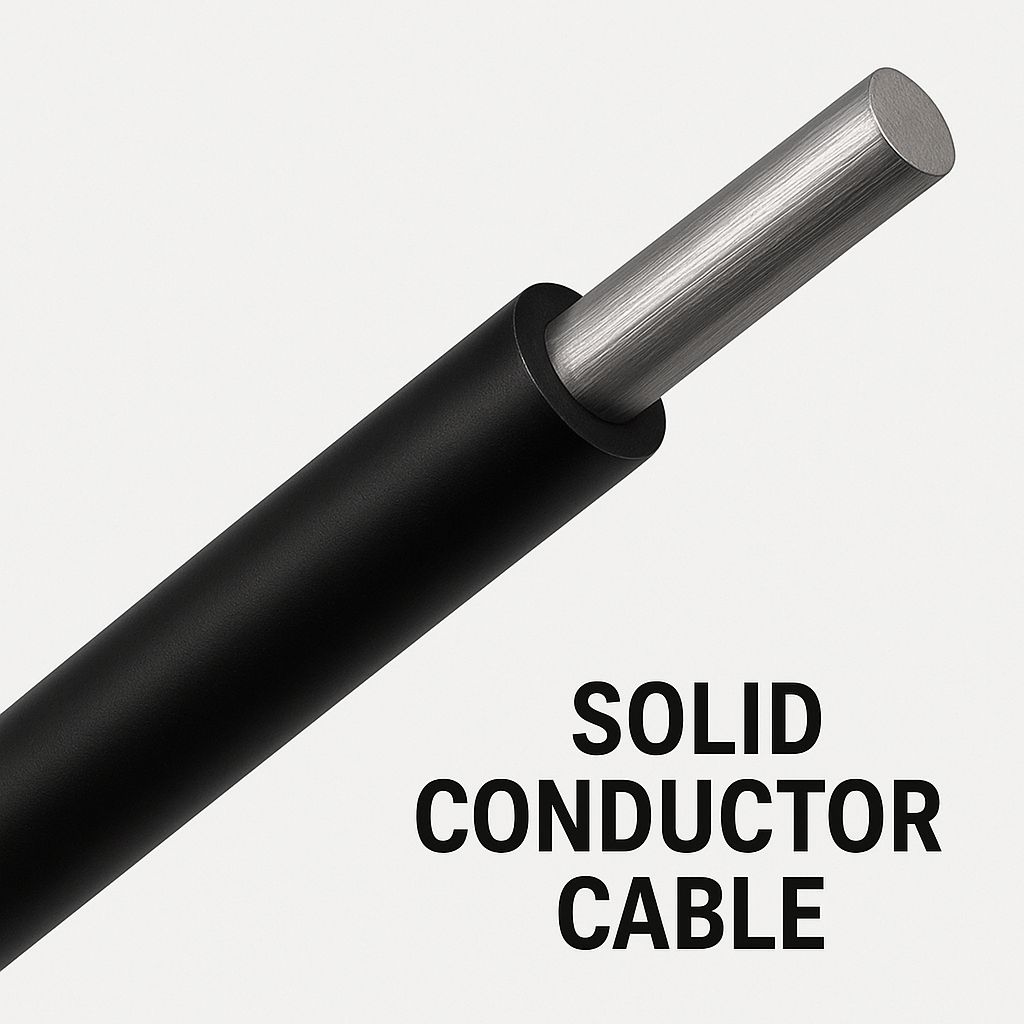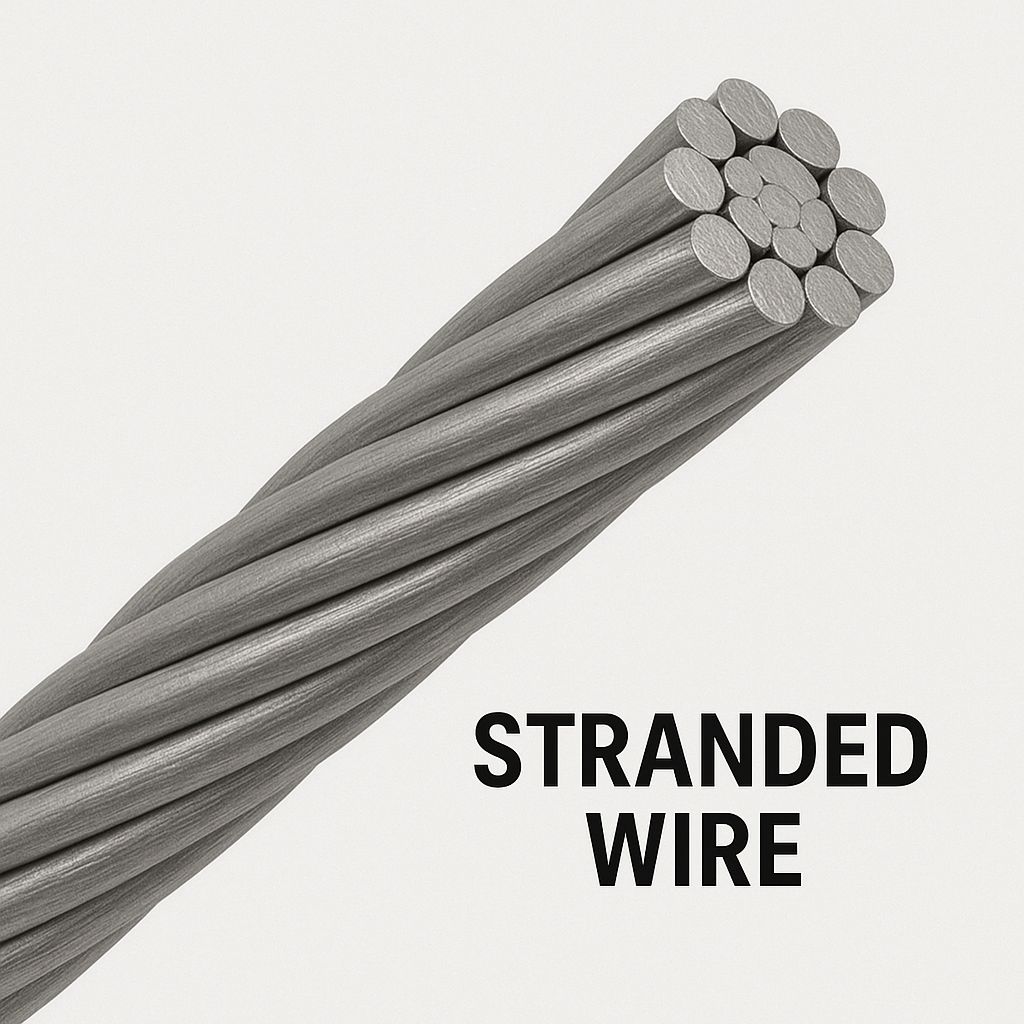When it comes to building reliable and efficient power systems, the choice of transmission line conductor types plays a crucial role. Overhead conductors are the lifeline of electrical power transmission, carrying high-voltage electricity across vast distances. Several types of conductors are used in transmission and distribution lines based on mechanical strength, conductivity, and environmental conditions. Commonly used transmission line conductor types include AAC, ACAR, AAAC, and ACSR. Among these, the all aluminum alloy conductor (AAAC) has gained popularity for its balance of strength and conductivity. In this post, we will explore the different types of overhead conductors, their construction, advantages, and typical applications.
Important Characteristics of Overhead Conductors:
The conductor is one of the most important components of transmission and distribution system that carries current from one location to another. The conductor material used for transmission and distribution of electric power must have following characteristics:
i. High electric conductivity
ii. High tensile strength in order to withstand mechanical stresses.
iii. Lower weight per unit volume
iv. Easy availability and lower cost.
Types of Overhead Conductors:
All the conductors used in overhead transmission and distribution lines can be classified into 3 types:
- Solid conductor
- Stranded conductor
- Bundled conductor
1.Solid Conductor:
Solid conductor is made of one single piece of metal wire. Solid wires are rarely used in transmission and distribution purposes now-a-days because of its low tensile strength and ow flexibility. The most commonly used conductor materials for solid conductor or any other conductor used in transmission and distribution lines are copper and aluminium.

➢ Copper vs. Aluminium: Copper is the best conductor due to its high electrical conductivity and great tensile strength but owing to its high cost and non-availability the trend now-a-days is to use aluminum in place of copper.
Aluminium has conductivity of 60% to that of copper and also lesser tensile strength than that of copper but it is cheaper and lighter in weight. Due to its low-density aluminium conductor has half the weight of an equivalent copper conductor. That’s why aluminium and its alloy conductors are preferred over copper as conductor material in transmission and distribution overhead line.
2. Stranded Conductor:
These days stranded conductors are used in power transmission and distribution lines. Stranded conductors usually have a central wire around which there are successive layers of 6,12,18,24 wires.
For n layers, the total no of individual wire in a stranded conductor is 3n(n+1) +1.
As instance, for 1 layer stranded conductor total no of wire is 3×1(1+1) +1=7, for 2 layer total no of wire is 3×2(2+1)+1=19.
If diameter of each strand is d then diameter of the stranded conductor will be (2n+1)d.

The stranded conductors used in overhead power lines are
- AAC Conductor
- AAAC Conductor
- ACSR Conductor
- ACAR Conductor
- AAC Conductor: The full form of AAC conductor is All Aluminium Conductor. They are made of pure Aluminium conductor in center and in surrounding layers.
- AAAC Conductor: All Aluminium Alloy Conductor or AAAC conductor is made of Aluminium alloy. They have excellent conductivity and high tensile strength because of Aluminium alloy in all strands.
- ACSR Conductor: The most widely used overhead conductor is ACSR conductor. The full form of ACSR conductor is Aluminium Conductor Steel Reinforced. It consists of a core of galvanized steel strand surrounded by a number of Aluminium strands.
➢ Advantages of ACSR conductor:.
i. The steel core takes a greater percentage of mechanical stress while the Aluminium carries the bulk of current. So, it has good conductivity and high mechanical strength.
ii. Being of high tensile strength and lighter in weight produces small sag and therefore longer spans can be used. The use of larger span means lesser number of line-supports, so overall cost of supports, foundations, insulators is reduced.
iii. It has larger diameter than any other type of conductor of same resistance, so corona losses are reduced.
- ACAR Conductor: The full form of ACAR conductor is Aluminium Conductor Alloy Reinforced. It consists of an Aluminium alloy core surrounded by layers of aluminium wire.
3. Bundled Conductor:
A bundled conductor is a conductor made up of two or more conductors, called the sub-conductors, per phase in close proximity compared with the spacing between phases.
The sub-conductors are separated from each other by a constant distance varying from 0.2 m to 0.6 m. It is used in extra high voltage transmission lines (voltage greater than 230 kV).
Advantages of Bundled Conductor:
i. It reduces the voltage gradient around transmission lines so corona loss reduces.
ii. The inductance per phase in comparison with single conductor lines is reduced.
iii. It has higher capacitance to neutral therefore higher charging current which helps in improving the power factor.
iv. The bundle conductor transmits bulk power with reduced losses and reduce interference with communication lines, thus increases the efficiency of electrical transmission.